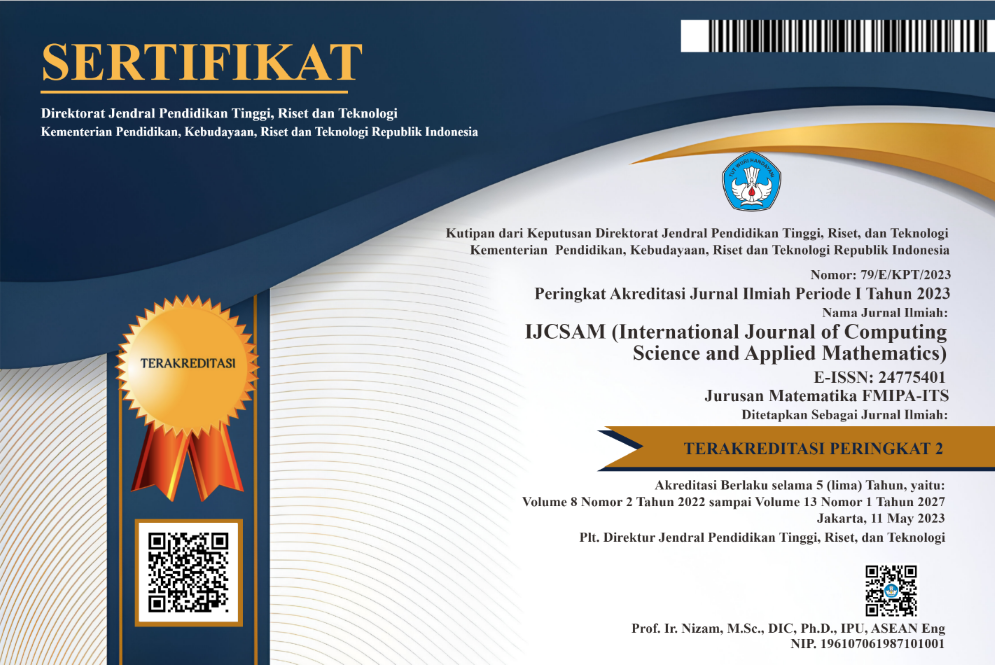Bifurcation Analysis of Toxoplasmosis Epidemic Control on Increased Controlled Rate of Suppressing the Rate of Infected Births
Abstract
Keywords
Full Text:
PDFReferences
E. Kelting, “Toxoplasma gondii: A mathematical model of its transfer between cats and the environment.”
C. Pe˜na, K. Garcia, and H. Martinez, “Hybrid model of the spread of toxoplasmosis between two town of colombia,” Tecciencia, vol. 10, no. 18, pp. 1–7, 2015.
M. Hanafiah, M. Kamaruddin, W. Nurcahyo, and Winaruddin, “Studi infeksi toksoplasmosis pada manusia dan hubungannya dengan hewan di Banda Aceh,” Jurnal Kedokteran Hewan, vol. 4, no. 2, pp. 87–92, 2010.
R. Nurcahyo, “Toksoplasmosis pada hewan dan manusia,” Yogyakarta: Samudra Biru, 2012.
M. Yanni, “Model matematika penyebaran parasit toksoplasma gondii pada inang perantara dengan interaksi secara tidak langsung oleh inang definitive,” Ph.D. dissertation, Universitas Gadjah Mada, 2017.
D. Aranda, R. Villanueva, A. Arenas, and G. Gonzalez-Parra, “Mathematical modeling of toxoplasmosis disease in varying size populations,” Computers & Mathematics with applications, vol. 56, no. 3, pp. 690–696, 2008.
G. Gonzalez-Parra, A. Arenas, D. Aranda, R. Villanueva, and L. Jodar, “Dynamics of a model of toxoplasmosis disease in human and cat populations,” Computers & Mathematics with applications, vol. 57, no. 10, pp. 1692–1700, 2009.
P. Yongzhen, J. Xuehui, L. Changguo, and G. Shujing, “Dynamics of a model of toxoplasmosis disease in cat and human with varying size populations,” Mathematics and Computers in Simulation, vol. 144, pp. 52–59, 2018.
A. Arenas, G. Gonzalez-Parra, and R.-J. Mic´o, “Modeling toxoplasmosis spread in cat populations under vaccination,” Theoretical population biology, vol. 77, no. 4, pp. 227–237, 2010.
M. Yanni and Z. Zulfahmi, “Analisis pemodelan dan simulasi matematika pengendalian epidemi toksoplasmosis,” JTAM (Jurnal Teori dan Aplikasi Matematika), vol. 3, no. 2, pp. 114–120, 2019.
DOI: http://dx.doi.org/10.12962%2Fj24775401.v6i1.5978
Refbacks
- There are currently no refbacks.
View My Stats

International Journal of Computing Science and Applied Mathematics by Pusat Publikasi Ilmiah LPPM, Institut Teknologi Sepuluh Nopember is licensed under a Creative Commons Attribution-ShareAlike 4.0 International License.
Based on a work at https://iptek.its.ac.id/index.php/ijcsam.






